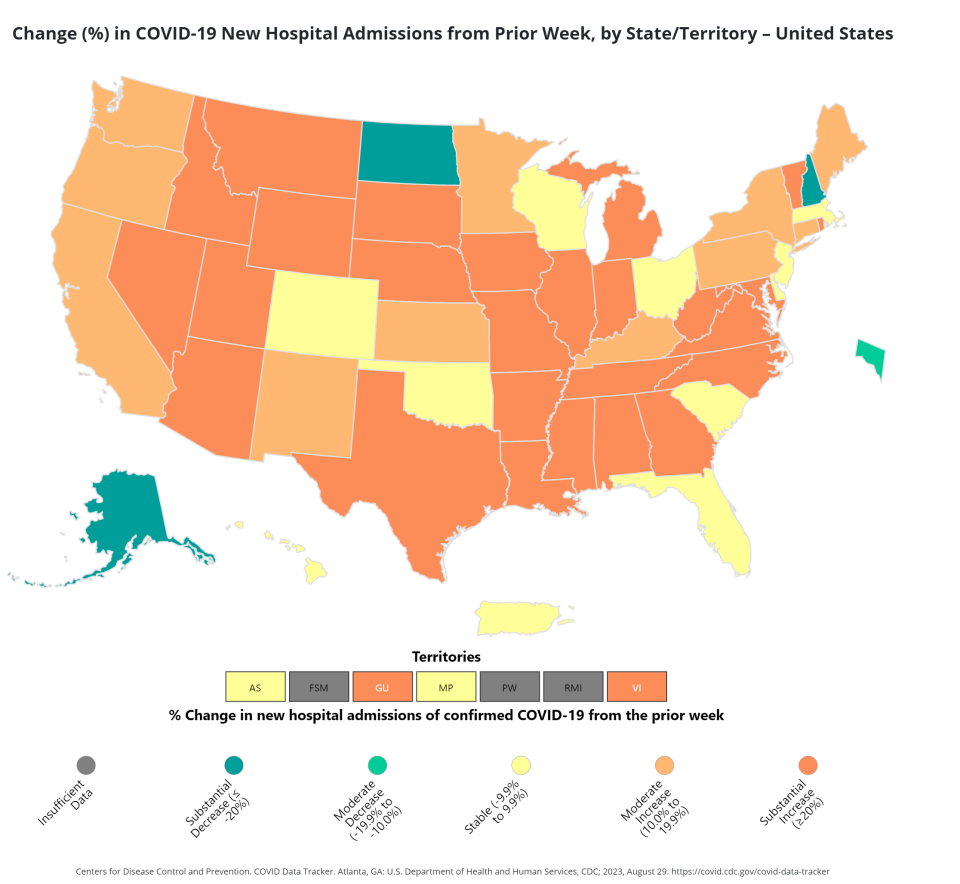COVID-19 hospitalizations are once again rising. What does it mean for Oklahomans?
As summer comes to an end, kids go back to school and families start planning for the fall, some are wondering if they should once again be concerned about COVID-19.
COVID-19 hospitalizations in the United States have been on the rise since mid-July, according to the Centers for Disease Control and Prevention's tracker.
What does the latest COVID-19 data show in Oklahoma?
A slight increase in hospitalizations also has been seen in Oklahoma, with 96 new hospital admissions the week of Aug. 19, the most recent data available. But the increase was slight enough that the CDC classified Oklahoma as remaining "stable," while other states saw "substantial increases."
This increase in hospitalizations is not necessarily surprising given the virus' history. There has been a surge in hospitalizations every winter and summer since August 2020, according to CDC data.

Oklahoma, like many states, also uses wastewater testing to evaluate COVID-19's presence in communities. According to Oklahoma's wastewater testing, the virus is showing up more frequently but so far is still in very low concentrations.
About 500 people in the United States died weekly from COVID-19 during the months of July and August, with the most recent data for the week of Aug. 19 showing 324 deaths.
What is the CDC saying about the latest variant?
The newest strain of COVID-19, one of many strains of the omicron variant, BA.2.86, has been found in Israel, Denmark the U.K., and the first U.S. case of the variant was recently identified in Michigan.
For now, the variant, nicknamed Pirola, doesn't appear to be causing more severe illness. Pirola has 30 spike protein mutations that differ from currently circulating variants like XBB.1.5, said Dr. Rajendram Rajnarayanan, assistant dean of research and associate professor at the New York Institute of Technology College of Osteopathic Medicine at Arkansas State University.
According to the CDC, current tests and medications for COVID-19 so far appear to work well with the Pirola variant. There is also an updated vaccine coming as early as mid-September that should provide better protection against the Omicron variant XBB.1.5.
"Scientists are evaluating the effectiveness of the forthcoming, updated COVID-19 vaccine," the CDC said. "CDC’s current assessment is that this updated vaccine will be effective at reducing severe disease and hospitalization."
How can I keep from getting COVID-19?
The CDC said the Pirola variant spreads the same way as previous variants and to continue taking the following precautions to avoid catching or spreading the virus:
Get your COVID-19 vaccines.
Stay home if you are sick.
Test for COVID-19 if needed.
Seek treatment if you have COVID-19 and are at high risk of getting very sick.
If you choose to wear a mask, wear a high-quality one that fits well over your nose and mouth.
Improve ventilation.
Wash your hands.
This article originally appeared on Oklahoman: U.S. COVID cases on the rise, including in Oklahoma

